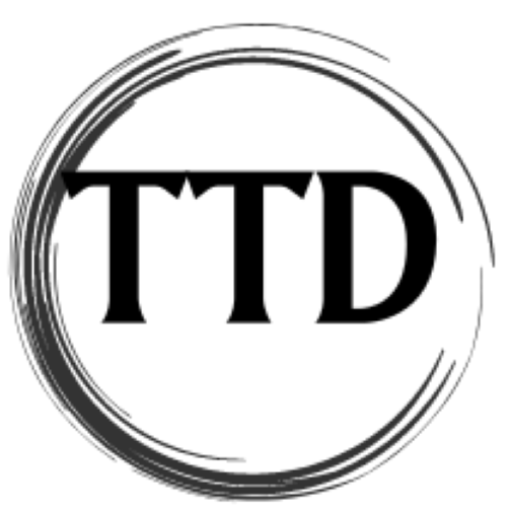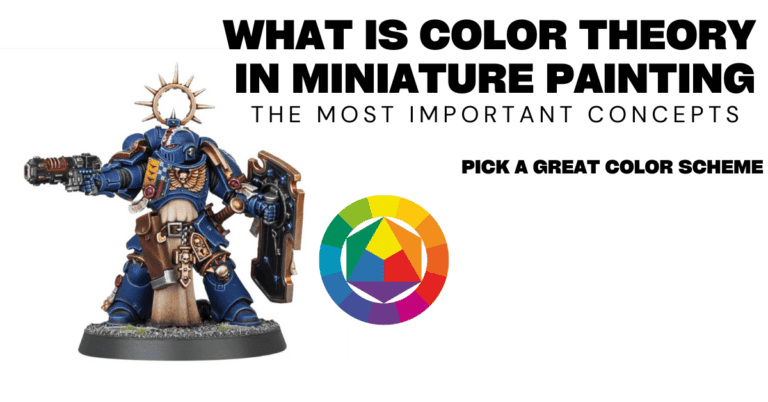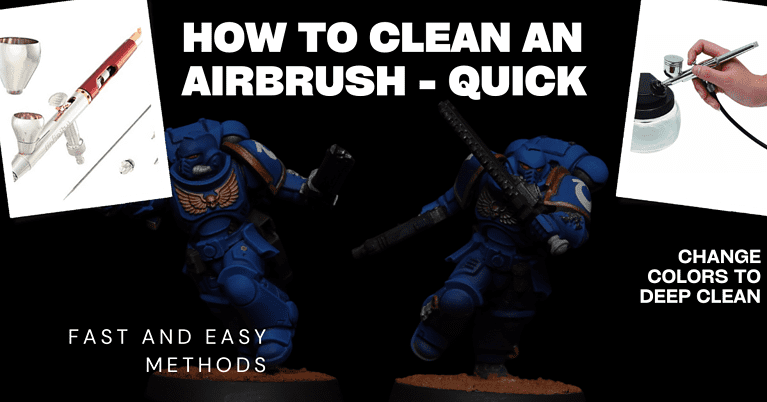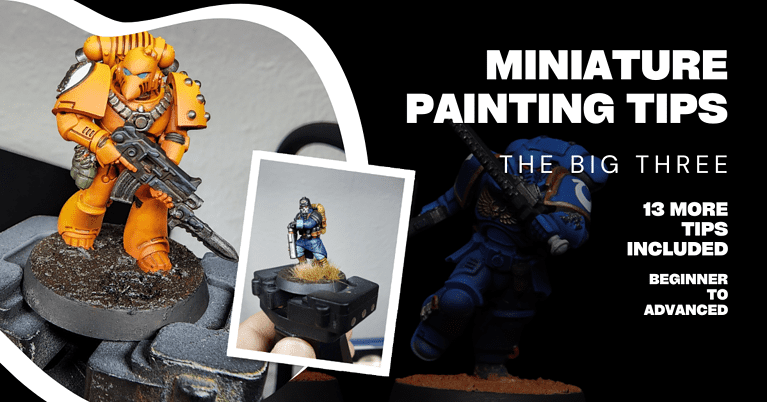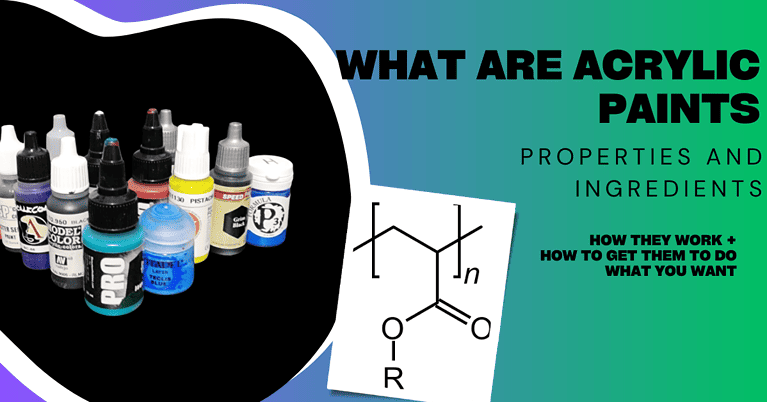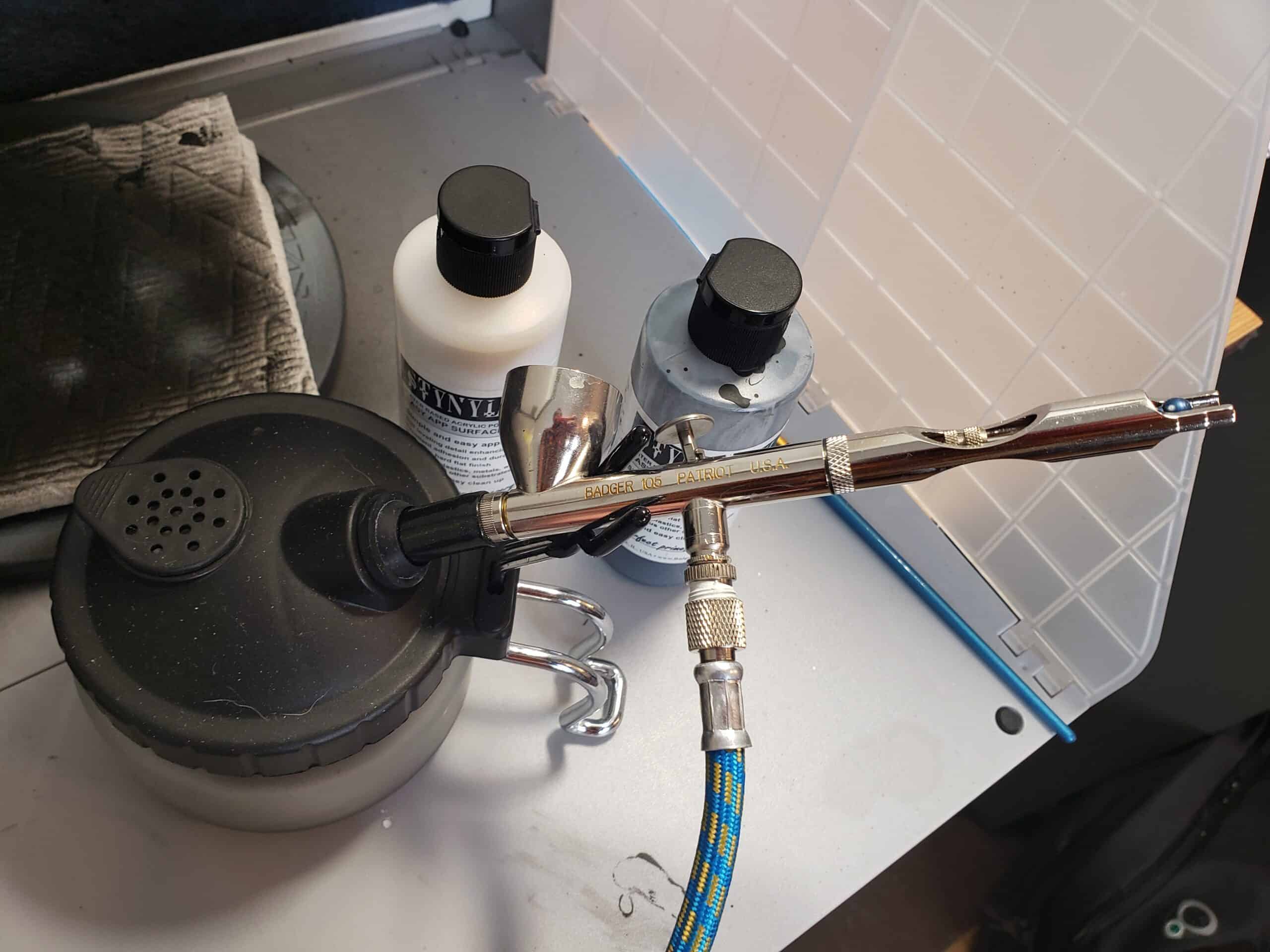How to Use Citadel Contrast Paints, Speed Paints, and XPress Colors in 2023
For this guide, I’m using the term “Contrast Paints” fairly interchangeably with the competitor products: Speed Paints, XPress Colors and others. Understand they are all made to do essentially the same thing: a coat of paint that has darker pigment flow into recesses.
Each specific color has it’s own unique properties. Even different colors from the same brand. The brands do have some small distinctions which I’ll cover below.
With that said, here we go:
The Best Uses of Contrast, Speed and XPress Colors on Miniatures
Citadel Contrast Paints primary use is as a single coat of paint over a light base coat or primer. The paint is made to flow into recesses and give a darker pigment in the areas shadows would naturally lay. By doing this, one coat of paint gives your miniature a measure of highlight and shadow.
It’s the highlight and shadow that gives your miniature contrast. That will make it look much better than a flat coat of paint. It reads as more “real”. Contrast paints are integral in the popular “SlapChop” painting method.
Citadel Contrast Paints, Army Painter Speed Paints, and Vallejo XPress colors (among others) are all similar formulations and competitors. They all have the same properties of flowing into recesses.
They do have differences and I can cover that later, but generally speaking they are very much the same.
Other Uses of Contrast, Speed and XPress Colors:
Washes: One of the best tips for beginners when miniature painting is to try washes. While there are already paints made to use as a wash, I find that Citadel Contrast paints, when thinned down with contrast medium, make fantastic washes.
It is a subtle difference between the primary use of contrast paints and washing. Normally, you’ll apply contrast paint over a light color primer. The contrast paints supply all the color, and give a highlight/dark finish.
In the case of a wash, what you’re doing is applying a thinned down version of contrast paints over a color. So the contrast paints are just adding to an already existing color.
For example, Guilliman Flesh Contrast Paint is excellent as a caucasian skin tone on its own. Lay down a white or off white prime, put on a layer of Guilliman Flesh right out of the pot, and you have a good skin tone with contrast to it.
Alternatively, paint a base coat of something like Citadel Cadian Flesh, which is a standard acrylic paint. Then take thinned down Guilliman Flesh Contrast, and wash it over the Cadian color. This gives you a much better skin tone in my opinion.
It’s more steps, but it’s a better result.
Airbrush: One of the biggest uses of contrast paint can be through an airbrush, where it has very different properties. When it is atomized in the airbrush, it acts exactly like a transparent ink.
There is no more contrast property, so be aware of the result you will get. It’s more of a see through layer that adds color, but allows for whatever is underneath to show.
Blending: Contrast paints are also excellent for blending. They are transparent and what you’re trying to do when you blend two colors together is blur or smooth the transitions between the colors.
So for example if you’re transitioning from a dark blue to a lighter blue, rather than have a sharp line between the two, you want it to be a smooth transition. So dark blue, slightly lighter, slightly lighter again, all the way into the new color.
Contrast allows you to do that easily.
Feathering: Feathering is a way of spreading the paint out gradually. Because Contrast is thin and has transparent properties, it lends itself well to this method.
What you would do is take a long flat surface like a sword. Place a fair amount of contrast at one end. While the paint is still wet, quickly clean your brush off in water. Dab the wet brush on paper towel to get the excess off.
Next “feather” out the paint with the damp brush. You’ll be brushing back and forth spreading a little of the paint down the surface of the sword. This will result in a gradient from top to bottom.
How Primer Color, Undercoats and Base Coats Impact Contrast Paints
Because Contrast Paints are transparent, what they go on top of is hugely important. If you apply black standard acrylic paint over white primer, it will fully cover it. If you apply a black contrast paint over white primer, you’ll still see shades of grey from the white underneath.
With Contrast Paints, Speed Paint, and XPress Colors, your primer, undercoat or base coats make a very big difference.
Let me start by defining these terms as they apply to miniature painting
Primer: A primer is a specific type of paint designed to bond well to the surface it’s applied to, and give a smooth surface. This provides a great base for future layers of paints. Primers are available in many colors.
Undercoat: A first layer of paint on the miniature. It can also apply to a primer, but it’s not necessarily a primer. Undercoats are simply an application of paint or primer that you intend to put another layer of paint on top of.
Base Coat: A base coat is simply the first layer of paint you apply to a miniature. Typically you prime your miniature first, then apply a base coat in whatever color or colors you want.
My recommendations for the “best” undercoats/base coat or primer are the following:
Primer Recommendations: A simple white primer works well. If you want to apply a bright color and want a bright result, white is a good starting point. Bright yellow, bright green etc.
Light grey is excellent, and takes the edge off of really bright colors if that’s your goal.
Zenithal Prime in black and white or any color and white, is by far my favorite choice of prime for contrast. It’s part of the SlapChop Method which I encourage you to read about if you want to work with contrast paints.
Undercoat and Base Coat Recommendations: I love the Citadel base layers made for contrast paints: Grey Seer and especially Wraithbone. They come in spray cans if you don’t have an airbrush: Grey Seer – Wraithbone. I personally use the paints in an airbrush.
Disclaimer: I love and use the citadel versions, but they are expensive. It lasts a long time so I’m ok with it, but if you’re on a budget, just find similar colors from Vallejo like: Bone White and Light Grey.
Speed Painting Miniatures – There Are Different Levels of Speed
Speed Painting is a very popular topic in miniature painting. Like many things in art, definitions can vary. At it’s core, speed painting is trying to get to a finished product you are proud of, efficiently and quickly.
It could be done very fast, with say an airbrush and only a few colors, in under 30 minutes.
It could be a bit more elaborate and be done in an hour. Or two, or three. Speed painting comes down to how fast you want it to go to get the result you want.
I find it useful to think about techniques and tricks to speed up your process, while keeping quality relatively high.
The SlapChop method is essentially a combination of several speed painting techniques. The goal is not to get it done in the absolute shortest time. It’s to get a good quality result, quickly.
Speed painting is a matter of learning different ways to get the results you want quicker. Learn how to use contrast paints. Learn how to us a wash, or how to dry brush. Plan out your painting and work in assembly line etc.
Six Essential Speed Painting Tips and Techniques:
Zenithal Priming: A prime in black (or other color) followed by a spray of white (or other light color) over the top with a spray can primer or airbrush. This gives an extremely quick, but very good representation of natural highlights and shadows.
Assembly Line Painting: If you are painting multiple figures, this technique is fantastic. If you’re painting 5 orcs for example, you might start with painting all the skin green. One at a time. Then add leather boots to each. Then add steel paint to the axes.
You want to paint the same sections on each miniature in succession. One after the other. Then move on to the next color or section. Much more efficient than doing one full miniature at a time.
Airbrushing: The airbrush makes painting faster by it’s nature. You can simply cover more area quicker with an airbrush. Spray paint cans achieve similar results. Just be aware they both give a result that looks different from applying paint with a paint brush.
Contrast Paint Speed Paint and XPress Color: All of these types of paint allow for quicker application of highlight and shadow. Similar to Zenithal Prime you get a quick lighter top, and darker recess with these paints.
Citadel has it’s own technique for using contrast paints to paint the Warhammer Models.
If you look up your model, for example this Primaris Lieutenant, scroll down to the bottom. You’ll see a section called “HOW TO PAINT“. They have Classic Method and Contrast method available to toggle between. This lists the paints they suggest to achieve the look on the box art.
Learning how to use contrast paints is worth your time, and it’s not very difficult. Just understand it’s not one single method. Contrast paints are a tool.
Dry brushing: This is a technique of quickly brushing back and forth over the highest points on your surface to get a highlight or color contrast. It is quick, easy to learn, and very effective.
Dry brushing is typically done with a specific type of brush but you can substitute make up brushes that do just as well.
Washes and Shades: Washes are another quick way to get some contrast on your miniature. A base coat followed by the venerable Nuln Oil wash from Citadel, takes your miniature to the next level. It’s doing the same thing as a contrast paint, but a wash is generally thinner paint.
Best Brushes for Contrast Painting
For Contrast Paints you want to apply a generous amount of it, quickly. I would not necessarily say a thick coat, but don’t be shy about getting a good amount on.
Therefore larger brushes with a fairly thick belly are best. Note you don’t want to over do this. Don’t flood the miniature with paint.
My favorite brushes are either Rosemary and Co or Raphael sable brushes. For Contrast Paints I want a larger size brush, size 2 minimum, or size 3 preferably
If you want a very specific recommendation for a brush to use with Contrast Paint I would go with a Raphael 8404 either in Size 3 or Size 2
That being said, the main concern is a bigger size brush. So if you are trying to learn how to use contrast paints and you have some synthetics you like, they are more than good enough to use. You don’t need anything particular to use contrast paints.
The contrast paints do most of the work. Paint flows into recesses and keeps a light color on raised surfaces. If you already paint miniatures any of the larger brushes you use should be just fine.
Citadel Contrast Paint Range Colors Release 1 and 2:
There are a total of 61 Contrast Paints currently available. 34 original release and then 27 more in 2022.
Contrast Paints were released in June of 2019 and had 34 colors available. Those colors are:
- Apothecary White
- Black Templar
- Space Wolves Grey
- Gryph-Charger Grey
- Basilicanum Grey
- Volupus Pink
- Blood Angels Red
- Flesh Tearers Red
- Magos Purple
- Shyish Purple
- Aethermatic Blue
- Leviadon Blue
- Ultramarines Blue
- Talassar Blue
- Terradon Turquoise
- Akhelian Green
- Dark Angels Green
- Militarum Green
- Iyanden Yellow
- Nazdreg Yellow
- Gryph-hound Orange
- Snakebite Leather
- Cygor Brown
- Guilliman Flesh
- Fyreslayer Flesh
- Darkoath Flesh
- Plaguebearer Flesh
- Ork Flesh
- Skeleton Horde
- Aggaros Dunes
- Creed Camo
- Gore-grunta Fur
- Wyldwood
- Warp Lightning
In June of 2022, a second round of 27 new colors were released. This release has a slightly different formulation and are generally speaking more consistent than the original. They are:
- Bad Moon Yellow
- Imperial Fist
- Ironjawz Yellow
- Magmadroth Flame
- Baal Red
- Doomfire Magenta
- Sigvald Burgundy
- Luxion Purple
- Leviathan Purple
- Dreadful Visage
- Celestium Blue
- Asurmen Blue
- Stormfiend
- Frostheart
- Pylar Glacier
- Briar Queen Chill
- Nighthaunt Gloom
- Kroxigor Scales
- Aeldari Emerald
- Hexwraith Flame
- Striking Scorpion Green
- Karandras Green
- Gutrippa Flesh
- Mantis Warrior Green
- Garaghak’s Sewer
- Ratling Grime
- Black Legion
Can I Make My Own Contrast Paint?
Yes you can make your own contrast paint with contrast medium. Citadel sells their contrast medium in pots and you can combine it with other acrylics to make your own formulation.
This is helpful if you want a very specific color. Contrast paints work by allowing the medium the pigment is suspended in to flow into recesses and give a darker look while keeping a bright look on raised surfaces.
If you have a favorite ink or transparent paint you love, and want it to settle into recesses like contrast paints, try mixing it with contrast medium.
Just be aware your paint job might look different across multiple figures if you craft your own mix. It might be good to note how much medium to how much ink or paint you use.
Here is a good video on the subject:
Contrast Paint Alternatives
The two biggest competitors to Contrast Paints are Army Painters Speed Paint and Vallejos XPress Color.
Army Painter Speed Paint
This range released 24 colors originally and has now come out with Speedpaint 2.0. This range has 90 colors and includes a reformulated version of the original 24 colors in it.
The original release had some issues with reactivation, meaning if you put another layer on top of a speed paint, it would become liquid again and blend into whatever you were doing.
For a single pass this was irrelevant, or you could simply varnish over it and not have to worry, but generally speaking if you wanted to do more than just one pass, it wasn’t ideal.
The new formula has worked to resolve this and improve drying times.
Vallejo XPress Color
Vallejo is the newest entry into the Contrast alternatives with their XPress Color line. There are 24 paints available as I write this, which includes the base medium. So 23 colors + medium. More presumably to come. They come in 18ml dropper bottles.
Here are the names and Vallejo’s model color numbers
- Templar White 18ml 72401
- Dwarf Skin 18ml 72402
- Imperial Yellow 18ml 72403
- Nuclear Yellow 18ml 72404
- Martian Orange 18ml 72405
- Plasma Red 18ml 72406
- Velvet Red 18ml 72407
- Cardinal Purple 18ml 72408
- Deep Purple 18ml 72409
- Gloomy Violet 18ml 72410
- Mystic Blue 18ml 72411
- Storm Blue 18ml 72412
- Omega Blue 18ml 72413
- Caribbean Turquoise 18ml 72414
- Orc Skin 18ml 72415
- Troll Green 18ml 72416
- Snake Green 18ml 72417
- Lizard Green 18ml 72418
- Plague Green 18ml 72419
- Wasteland Brown 18ml 72420
- Copper Brown 18ml 72421
- Space Grey 18ml 72422
- Black Lotus 18ml 72423
- Xpress Medium 18ml 72448
Best Citadel Contrast Paint Colors
Please indulge me for a minute while I go on about my favorite contrast paints
Guilliman Flesh Contrast Paint: This is always on my desk within close reach. It’s great for skin tones, and for shading gold metallics. One of my favorite contrast paints by far.
Black Templar Contrast Paint: If you know what Nuln Oil is, you should try thinned down Black Templar. It’s an amazing wash when thinned with contrast medium. It’s also a great black contrast paint in right out of the pot.
Iyanden Yellow Contrast Paint: Depending on what you’re looking for, this is my favorite yellow. It’s not overly bright, it’s got that little bit of brownish orange to it.
Dark Angels Green Contrast Paint: I love this for grass and leaves. The citadel contrast paints line has a lot of greens, so you can choose your own favorites.
Baal Red Contrast Paint: One of the new contrast paints. Bold, bright red color that really makes things pop. I am a fan of keeping most things muted and desaturated, and then adding in one or two small areas of bright bold color.
Imperial Fist Yellow Contrast Paint: Another new entry to the citadel contrast paint line. This is a yellow yellow, if you get my meaning. Bright and clean. I also love the Imperial Fist Space Marine chapter so there you go.
Gharagak’s Sewer Contrast Paint: This new contrast paint is also excellent for leather.
Gryph-Charger Grey Contrast Paint: This is one of the more subtle colors in the citadel contrast paints line. It’s a desaturated grey/blue. I use it a lot when shading blues of any color.
Basilicanum Grey Contrast Paint: Another of the citadel contrast paints that is great as a wash over metallics. I put Basilicanum on any silver metals for some depth and shade.
These are just a few of my favorites. Most times it comes down to your specific project. I picked these because they get used the most. For example, flesh tones come up a lot. Metallics come up a lot. The citadel contrast paint range is pretty big and it’s still growing.
